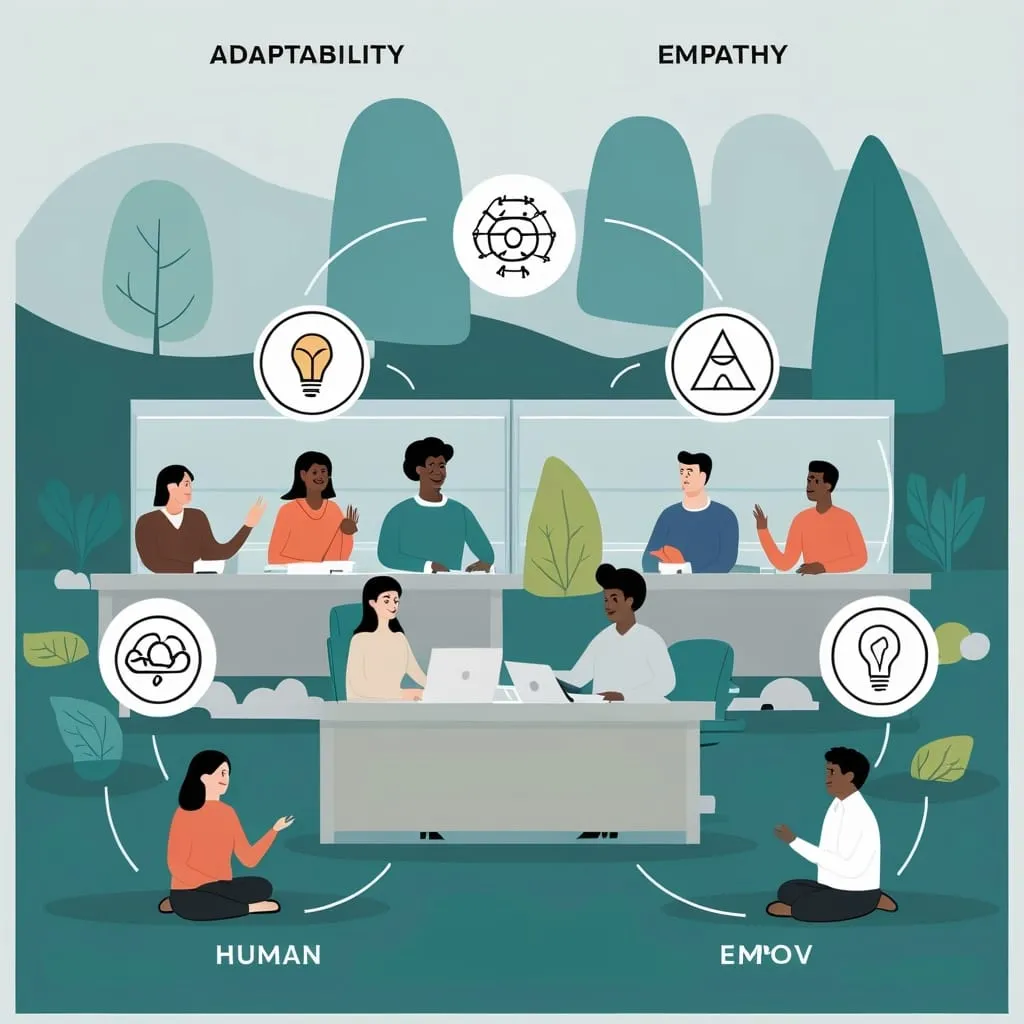Trust might feel like a simple word, but in the world of remote teams, it’s the glue that holds everything together. I’ve seen from experience—both mine and others’—that when trust is missing, even the most technically skilled or highly motivated teams can lose their spark. We often think of trust as a given or something that’s built over time, but with remote work, it demands more deliberate care. Why? Because we’re asking people to rely on one another without the little cues—eye contact, body language, spontaneous hallway chats—that make trust so natural in person. So how do leaders make up for what’s lost in translation when screens become the windows to our work world?
Let’s walk through five practical, often overlooked, ways to build trust in teams that rarely, if ever, share a physical space.
Schedule intentional connection moments. It sounds obvious, but it’s easy to let video calls become purely about tasks and deadlines. I make it a point to start meetings with time set aside for everyone to share a bit about their day. What’s something funny that happened at home? What weird weather are they facing? It’s these small moments that help us see one another as people, not just job titles. Sometimes, I’ll even pair team members for five-minute ‘coffee chats’, where they talk about anything but work. These seemingly simple conversations can do more than any agenda to dissolve barriers and build camaraderie. Ask yourself: When did you last learn something surprising about a teammate that had nothing to do with their job?
As Simon Sinek said,
“Trust is built on telling the truth, not telling people what they want to hear.”
Practice radical transparency. Many leaders were raised to believe that challenges and uncertainties should be shielded from the team. In a remote setting, this instinct backfires. I’ve found that people crave context, especially when they’re distant from the center of action. Sharing the full story—why a decision was made, what obstacles you’re facing, the risks involved—doesn’t weaken authority. It does the opposite. Teams are sharper and more resilient when they know what’s really going on. And don’t just broadcast decisions—invite questions, allow debate, and, most importantly, admit when you don’t have all the answers. As humans, we tend to trust those who aren’t afraid to reveal their vulnerabilities. Can you remember a time when someone’s honesty made you trust them more, not less?
Master asynchronous clarity. When teams are spread across cities, countries, or even continents, you can’t count on everyone being online at the same time. This is where precision in writing becomes a leader’s secret weapon. The world is full of messages that are rushed, vague, and easily misunderstood—especially when tone of voice and body language are stripped away. I’ve learned to slow down, craft written instructions as if I were explaining them to someone brand new, and spell out priorities and deadlines in plain language. Sometimes, I’ll even ask a teammate to ‘play back’ what they heard, just to spot any gaps. This habit reduces confusion and the frustration that comes with it. And there’s a bonus: when people receive information in this way, they feel respected and empowered, not micromanaged.
Rituals are the heartbeat of visibility in virtual teams. In traditional offices, recognition comes easily—a pat on the back, a spontaneous cheer. But in a remote environment, out of sight can quickly become out of mind. So, I build virtual visibility rituals. Maybe it’s a weekly roundup in our group chat highlighting big wins and small efforts alike. Sometimes we dedicate a portion of an all-hands meeting just to recognize contributions that could otherwise go unnoticed. I learned from one software team that saw a 30% jump in project delivery simply by systematically celebrating achievements—even minor ones. These rituals don’t just lift morale; they establish an environment where each person knows their work is seen and valued. Imagine logging off each day feeling recognized, not invisible. Wouldn’t you be more inclined to go the extra mile?
A famous quote from Maya Angelou captures this spirit:
“People will forget what you said, people will forget what you did, but people will never forget how you made them feel.”
Implement consistent feedback loops. Feedback isn’t a yearly event; it’s a rhythm. In remote setups, I’ve found it crucial to schedule regular, structured exchanges focused on support and growth, not just evaluation. Whether it’s monthly check-ins, pulse surveys, or peer-to-peer shoutouts, feedback must flow in both directions. One leader I admire asks team members what’s one thing he could do better—simple and effective. The trick is to make feedback expected, specific, and above all, safe. When people see that their input leads to change, trust deepens and hesitation fades. Is feedback in your team a moment of dread, or a welcomed chance to grow?
Of course, all these practices point toward something deeper: fostering psychological safety. How do you ensure that someone sitting alone at a kitchen table feels secure enough to take risks, ask for help, or admit mistakes? I’ve found that reliability—doing what you say, when you say you’ll do it—and showing up consistently are the foundations. Simple gestures matter: prompt replies, sticking to commitments, and following up on concerns. When a leader models this reliability, others follow suit, and the whole team becomes a safer place to share, innovate, and even fail.
There’s also the battle against isolation. Remote work, for all its flexibility, can leave people feeling adrift. To counter this, I use practical tools: virtual whiteboards for brainstorming, always-on chat rooms for watercooler talk, and ‘open office’ video hours where anyone can drop in. These create touchpoints that mimic the spontaneity of a shared office. What other creative ways could help a remote team feel connected, even across time zones?
Here’s a thought experiment: If you could change one thing about your current remote work culture to boost trust instantly, what would it be? Would it be more transparency, more recognition, more time for personal connection, or perhaps clearer communication?
Leaders who want to be truly trusted don’t just talk about openness—they live it. They make themselves available for the tough conversations, they admit when they’re wrong, and they create space for their teams to do the same. When trust is woven into daily habits—whether through connection moments, transparency, clarity, visibility, or feedback—it stops being a buzzword and becomes a real, lived experience.
Peter Drucker once pointed out,
“The most important thing in communication is hearing what isn’t said.”
That rings especially true in remote teams, where so much goes unsaid unless we make the effort to surface it.
These leadership practices may seem subtle, but their impact isn’t. Teams where trust is built with intention are faster, more innovative, and more resilient in the face of uncertainty. When physical presence is impossible, what fills the gap isn’t just technology or process—it’s the daily, visible choices leaders make to show trust and inspire it in others.
So, next time you log in to another video call, maybe try this: ask about someone’s weekend before you dive into business. Share an honest update about something that’s challenging you. Clarify an instruction until you’re sure it’s fully absorbed. Take a moment to spotlight a colleague’s success, no matter how small. And make feedback a habit, not an afterthought.
Each of those acts is a brick in the invisible but essential foundation of trust that enables remote teams not just to survive, but to thrive—even when miles apart.






